Why do we need a Timeline of the Montessori Mobiles? When a tiny little baby is born to this world, many parents want to make sure that they give the best they can to their little one. This, however, is not that easy. As soon as they utter the word ‘newborn’, shops bombard them with a plethora of baby toys and ‘must buy’ baby-related things. It’s hard to know which ones to choose!
This is especially true for toys. The market is saturated with toys intended for young babies. Some look so lovely that we actually want to get them for ourselves. We strive to have that picture-perfect baby room we always dreamt about. Many of the toys, however, are not good for our little ones. They might even be made of bad quality material which may be dangerous or even toxic. Or they might completely overwhelm our little one’s senses! But let’s stop for a second, what does a tiny baby REALLY need? Let’s look at the Timeline of the Montessori Mobiles and explain the Montessori mobile progression by age.
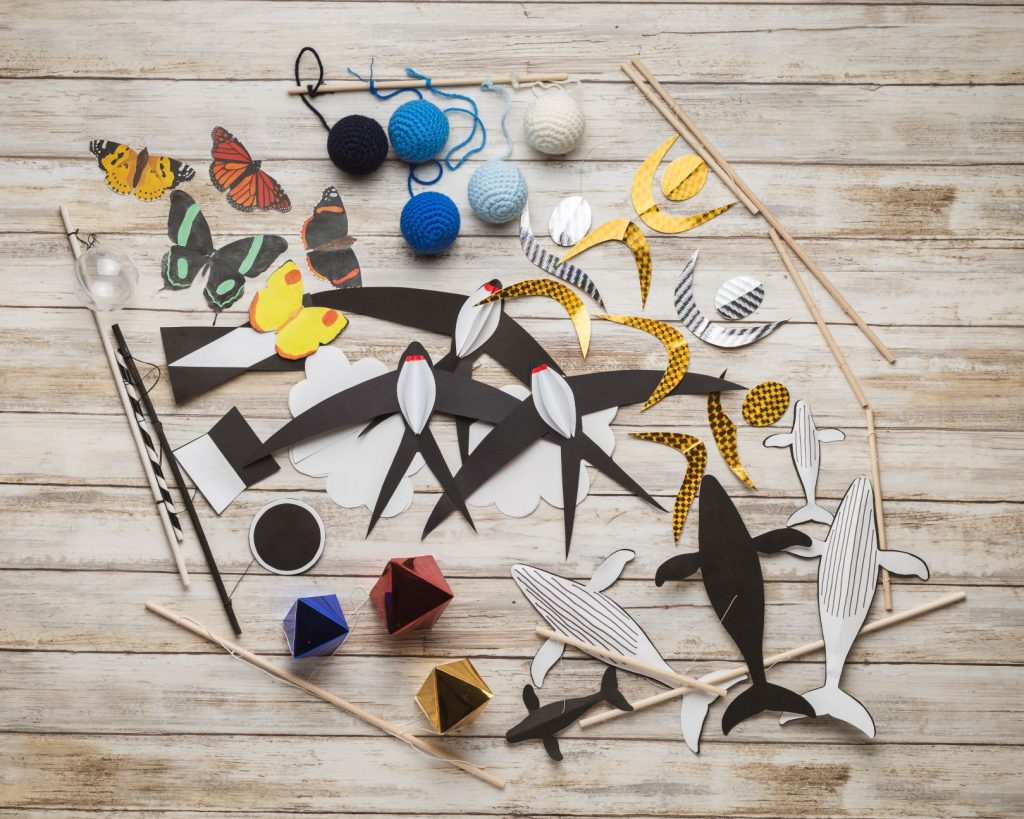
Very tiny babies
Newborn babies really do not need any toys. All they need is their physical needs taken care of, such as eating, sleeping, nappy change, bath time etc. and (and this is the most important) our love.
When they are born, their sight is the least well-developed sense. They can only see objects that are highly contrasting and are very close, about 30 cm/12 inches. (Did you know that this is the approximate distance between a mother’s and and her nursing baby’s eyes? High five, Mother Nature!!) Therefore the first visual aid you can offer your baby is some black and white high-contrast cards. Read more about visual development in the first six months here. Find free high-contrast card downloads in this post.
0-3 months
The mobiles that Montessori designed especially for this age group are not considered ‘toys’. They serve a specific purpose: they assist the child’s development of vision. They are simple, isolate the one sense they support (in this case the sense of sight), look beautiful and have a calming, soothing effect on the baby. Read more about why Montessori mobiles are so special in this post.
From around 2-3 weeks old (or rather, 3 weeks young!) babies are ready to move from static or still observation to dynamic or moving. This is when we can introduce the Munari mobile, the first one in the sequence of the Montessori Visual Mobiles. Read an in-depth description of this mobile in this post.
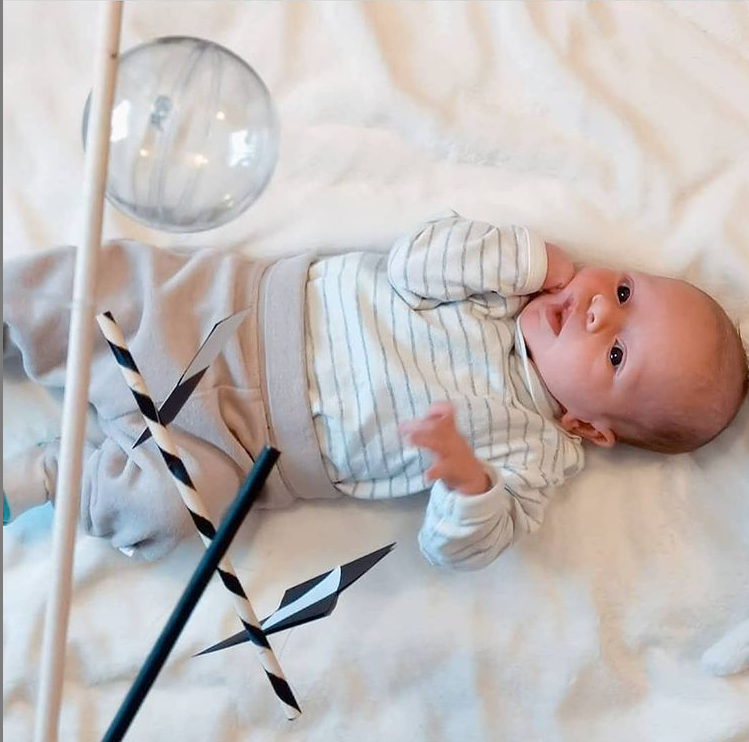
As babies’ vision slowly develop, they will soon be able to see strong, bright colours. This means they will be ready for the next mobile in the line, the Montessori Octahedron mobile. It is a perfect ‘next step’ for the baby, where the sense of sight is suitably challenged with the primary colours and moving from two-dimensional shapes to three. Read more about it in this post.
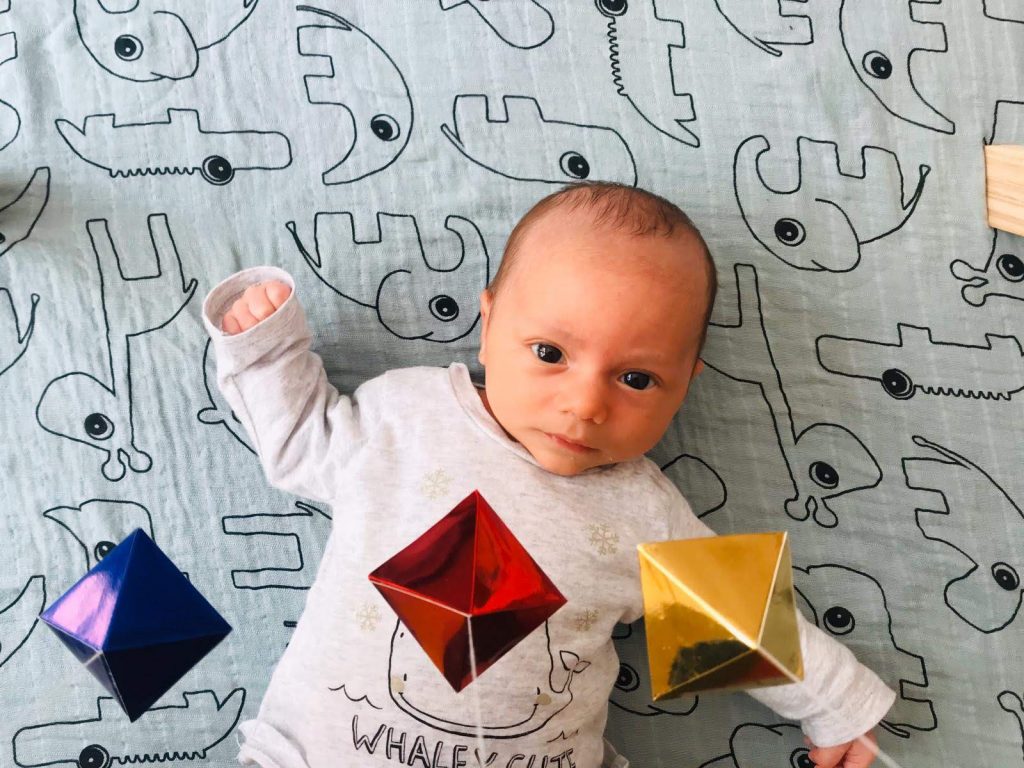
Soon your baby’s sight will be good enough to perceive the difference between shades. This is when we introduce the Montessori Gobbi mobile. This lovely mobile invites your baby to closely observe the varying hues. At the same time s/he practises focus, concentration and depth perception. Read more about the Gobbi mobile in this post.
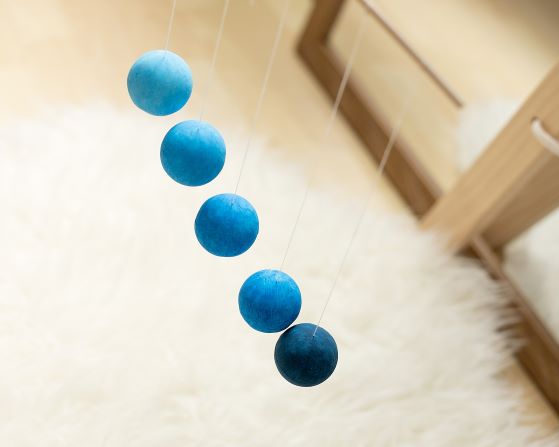
The next mobile in the Timeline is the Dancers. This gorgeous mobile depicts figures that look like dancing as they move in the wind. The iridescent paper the dancers reflects the light, capturing your baby’s attention for a long time. Read more about this mobile in this post.
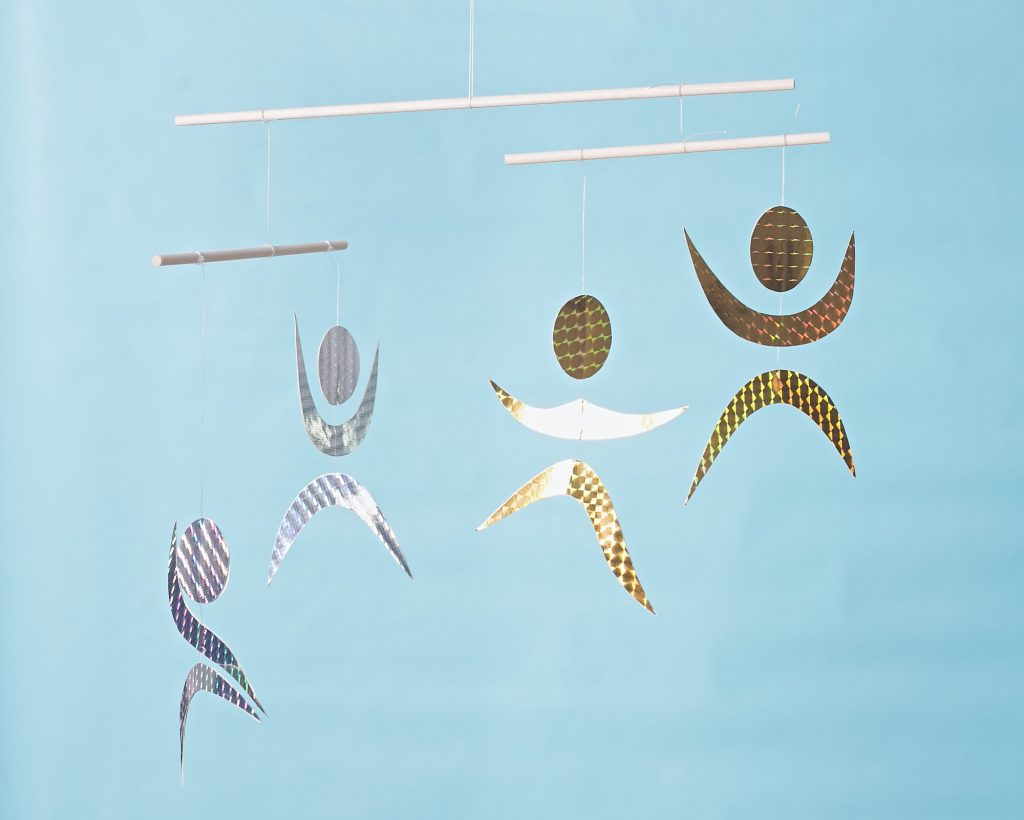
3 months+
The mobiles listed here do not come in a pre-determined sequence. You can alternate them weekly, or as the interest wanes. You can also use the previous mobiles as your baby can observe them with newly developed visual skills. Read more about how to keep up your baby’s interest in the mobiles in this post.
These mobiles are also referred to as animal mobiles. They usually include the Swallows, the Seagulls, the Butterflies and the Whales. They not only provide your baby with realistic images but also emulate the way the animals move in the air or in the water. The animal mobiles are all very inviting to the eye and a delight to look at, for older children and adults as well.
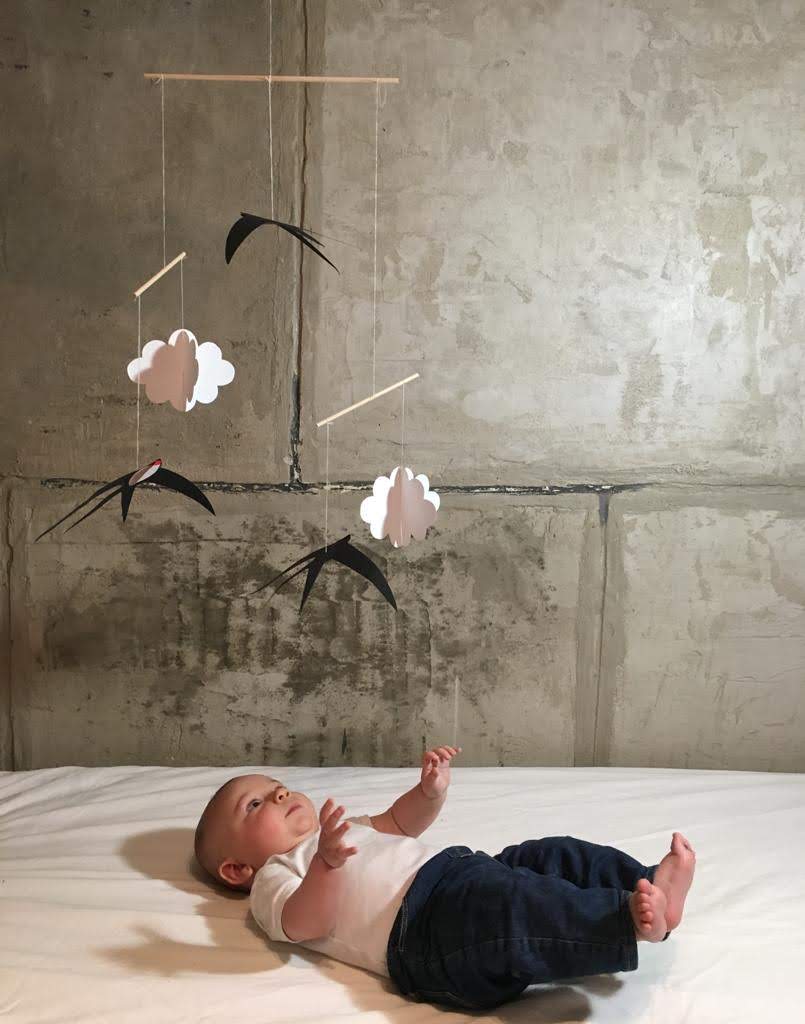
LIFE AFTER THE VISUAL MOBILES
By the time babies run out of the visual mobiles listed in the Timeline of the Montessori Mobiles they are ready to reach and grasp. When you observe that your child is ready, you can start to introduce the tactile mobiles and use them alongside with the visual ones. Start with the Bell on a Ribbon and the Ring on a Ribbon mobiles, then, when your baby is ready to grab and hold, move onto the Grasping Beads, the Montessori Puzzle Ball and the Montessori Bell Rattle.
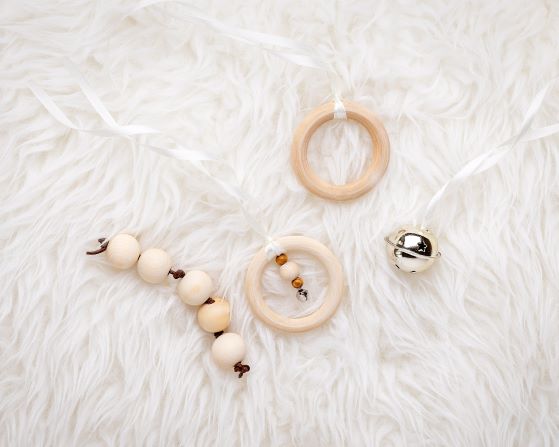
Please always supervise your baby when using a mobile.
Sensory toys
As soon as your little one mastered grasping, holding and letting go, their interest will turn to seeking sensory information. At this phase babies really enjoy objects that give their senses a good workout, such as your car keys! Just imagine! They are just SO shiny, the difference between the plastic and the metal calls for thorough examination, tasting included, the jingling sound it comes out of them every time someone picks them up… See what I mean? Fear not, you can keep your car keys (but keep them safe, away from tiny baby hands!). This is the moment when you have to crack out the Sensory Toys!
If you are a bit crafty and know how to sew then there’s an ample variety of DIY toys and keep your baby’s attention away from your car keys! The Sensory Bean Bags are so easy to make you can even use them to learn how to sew!
The DIY Fabric Sensory Ball ensures hours of fun for every sensory seeker baby, give it a go! But why is Sensory play important? Read this post to learn all about it!

Before you go to my Shop page and buy all the mobiles from there, learn about the Montessori myths and be realistic about your expectations toward the materials and towards you baby, too.
Make sure that you avoid the most common Montessori mobile mistakes.
FINAL THOUGHTS
This is the summary of the timeline of the Montessori Mobiles which accompany your baby’s development from birth to 6 month+, or until they find them interesting. If you’d like to make these mobiles yourself, you can buy all the resources from my Etsy Shop. Would you like to know more about the different kinds of reactions your baby might make while observing a Montessori mobile? Head over to this post here.
Click on the links to read more about how the Montessori Visual Mobiles, the Montessori Tactile Mobiles or the Sensory Baby Play help your baby’s development.
I’d love to see your baby using one of the Montessori mobiles! Please share your photos on my Instagram site. #montessoriedited, @montessoriedited
